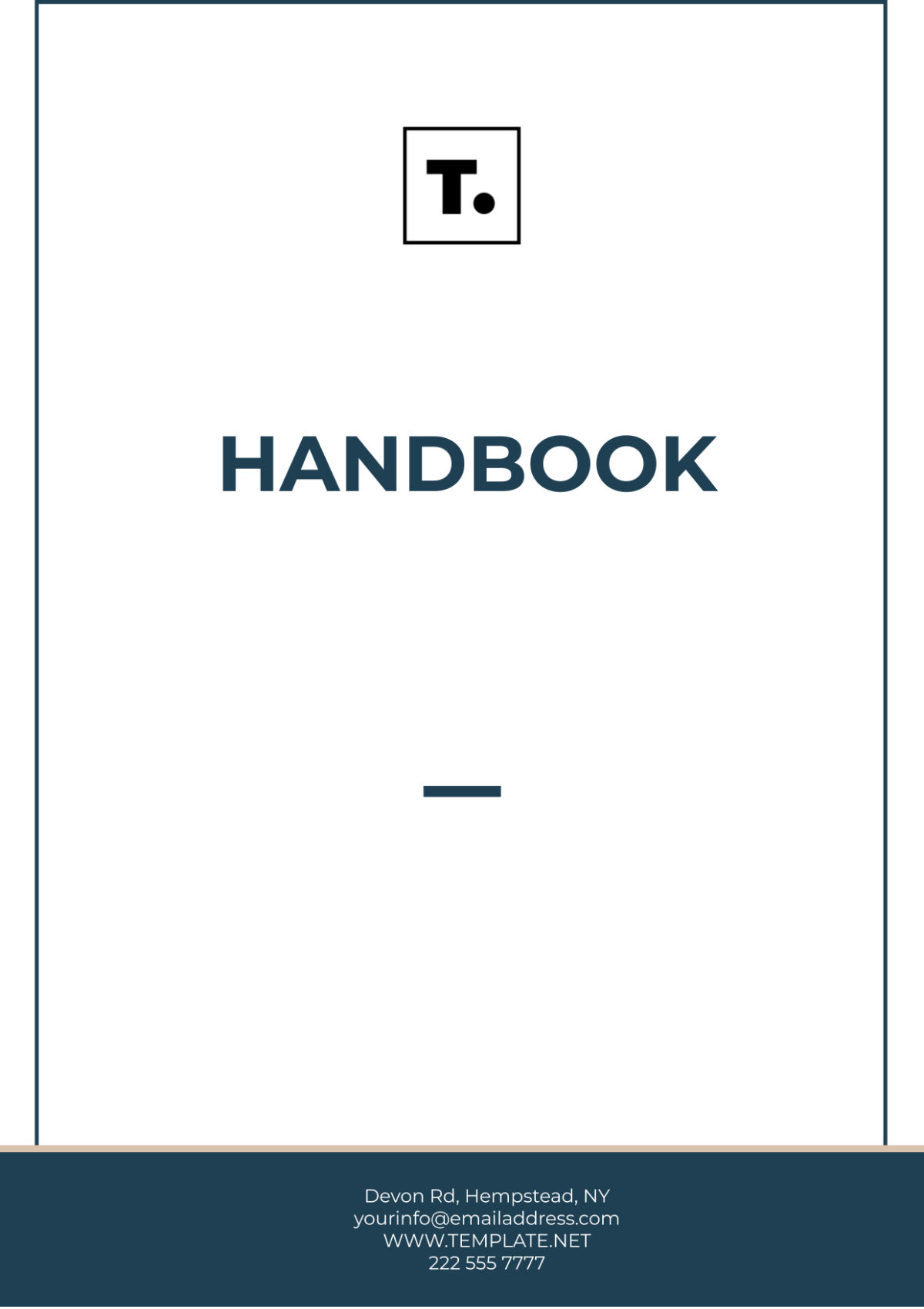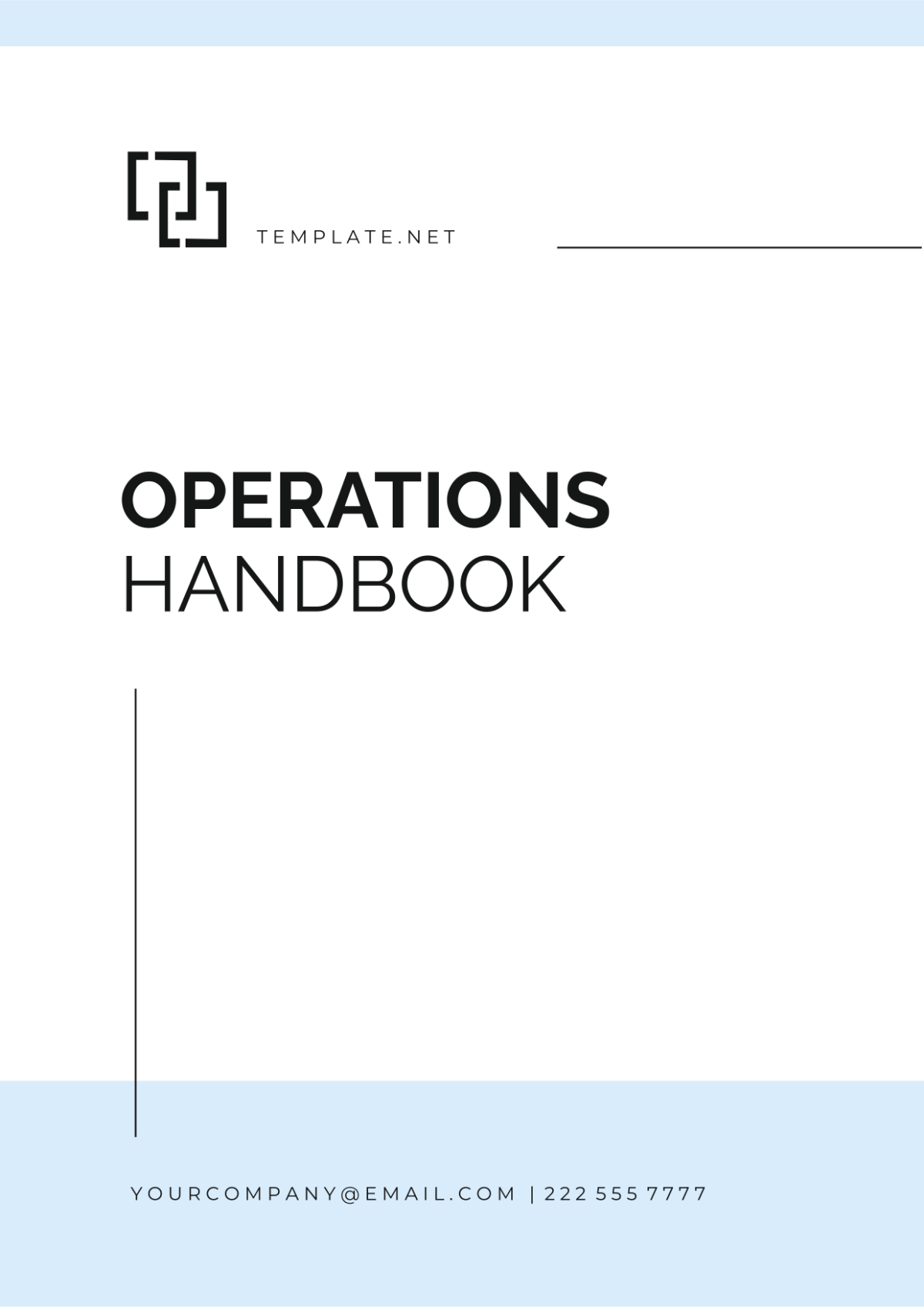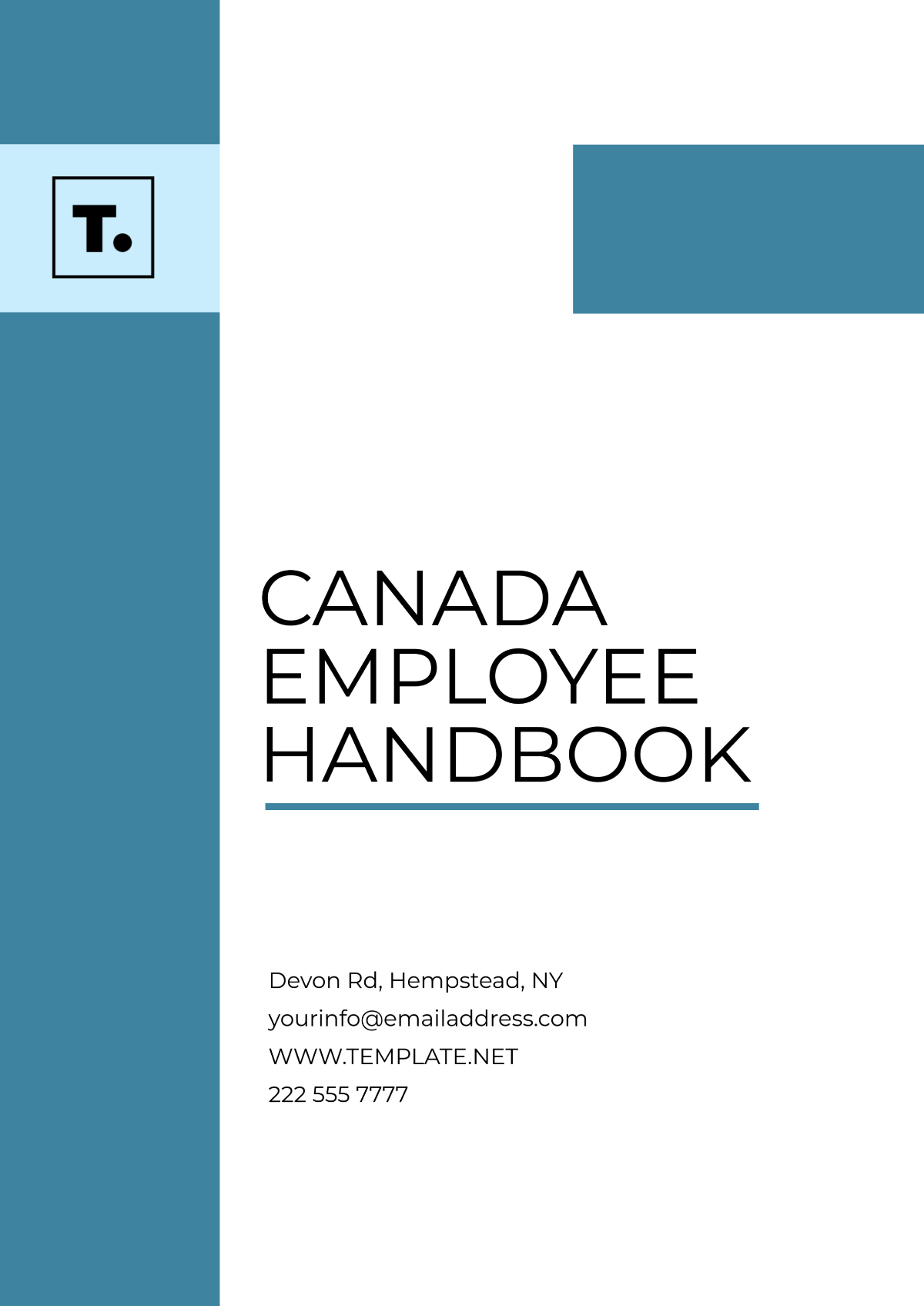Accounting Policy Development Handbook
I. Introduction
A. Purpose of the Handbook
The [Your Company Name] Accounting Policy Development Handbook serves as a foundational document designed to articulate the principles and guidelines that govern the organization's financial reporting. This comprehensive guide aims to provide a clear understanding of the rationale behind our accounting policies, promoting consistency and accuracy in financial reporting. By outlining the purpose of the handbook, we emphasize its role in facilitating transparent communication, supporting compliance efforts, and aiding decision-making processes at all levels of the organization.
B. Overview of Accounting Policies
Accounting policies are integral to the financial health of [Your Company Name]. They lay the groundwork for recording financial transactions, standardizing practices, and ultimately, producing reliable financial statements. This section introduces the concept of accounting policies, emphasizing their role in shaping the organization's financial narrative. Through a detailed overview, we aim to establish a shared understanding among stakeholders about the importance of these policies in providing a cohesive and meaningful representation of our financial performance and position.
C. Importance of Consistency and Compliance
Consistency in applying accounting policies is paramount for maintaining the comparability of financial information across reporting periods. This consistency ensures that stakeholders can make informed assessments of our financial performance and trends. Moreover, this section highlights the critical link between consistency and compliance, emphasizing the need to align our accounting practices with relevant standards and regulations. By maintaining this alignment, [Your Company Name] can uphold the integrity of its financial reporting, instilling confidence among stakeholders.
II. Governance and Responsibility
A. Introduction to Governance Structure
The governance structure for accounting policies at [Your Company Name] is designed to foster accountability, transparency, and effective collaboration. This introduction provides an overview of the key players in the governance framework, illustrating how their collective efforts contribute to the development, implementation, and oversight of accounting policies. By establishing a robust governance structure, we aim to ensure that the organization's financial reporting aligns with strategic objectives while adhering to regulatory requirements.
B. Roles and Responsibilities
1. Chief Financial Officer (CFO)
As the organizational steward of financial health, the CFO plays a pivotal role in setting the tone for financial management. In overseeing accounting policies, the CFO ensures alignment with strategic goals, effective risk management, and compliance with regulatory standards. By championing financial integrity, the CFO contributes to the overall trust and credibility of our financial reporting.
2. Controller/Chief Accountant
The Controller/Chief Accountant, as the custodian of accounting policies, leads the development and documentation processes. They collaborate with cross-functional teams, ensuring that policies are not only comprehensive but also practical for day-to-day application. The Controller/Chief Accountant plays a vital role in translating regulatory requirements into clear policy guidelines, fostering a culture of adherence and accuracy.
3. Finance and Accounting Managers
Finance and Accounting Managers are key implementers of accounting policies within their respective domains. Responsible for cascading policy directives to their teams, these managers ensure that day-to-day operations align with the documented policies. Their role involves continuous training, monitoring compliance, and promptly addressing any deviations, thereby contributing to the overall accuracy and reliability of financial information.
4. Internal Auditors
Internal auditors, in their assurance role, evaluate the effectiveness of internal controls related to accounting policies. Through regular assessments, they provide valuable insights for strengthening controls, minimizing risks, and improving adherence to policies. Their independent evaluations contribute to the organization's commitment to continuous improvement in financial reporting processes.
5. External Auditors
External auditors, as independent evaluators, bring an objective perspective to the organization's financial statements. Their thorough examination ensures that accounting policies are not only consistent but also in accordance with applicable accounting standards. Collaborating with external auditors enhances the reliability and credibility of our financial reporting, instilling confidence among external stakeholders.
6. Compliance Officers
Collaborating closely with the legal and regulatory affairs team, compliance officers play a critical role in ensuring that accounting policies align with an ever-evolving regulatory landscape. Their focus on staying abreast of legal requirements and industry-specific regulations helps [Your Company Name] navigate complexities, mitigate compliance risks, and uphold the highest standards of integrity in financial reporting.
C. Cross-Functional Collaboration
Effective cross-functional collaboration is at the heart of our governance structure. By bringing together expertise from various departments, we ensure that accounting policies consider diverse perspectives and address the specific needs of each functional area. This collaborative approach fosters a holistic understanding of financial reporting requirements and contributes to the development of well-rounded and robust accounting policies.
III. Accounting Framework and Standards
A. Choice of Accounting Framework
1. Generally Accepted Accounting Principles (GAAP)
The choice of accounting framework is a critical decision that directly impacts the consistency and comparability of financial statements. [Your Company Name] follows Generally Accepted Accounting Principles (GAAP) to ensure our financial reporting aligns with widely accepted standards. This section delves into the principles of GAAP and emphasizes their role in providing a common language for financial reporting, enhancing transparency, and facilitating meaningful comparisons.
2. International Financial Reporting Standards (IFRS)
For organizations with a global footprint or international stakeholders, familiarity with International Financial Reporting Standards (IFRS) is paramount. This subsection outlines the considerations that led to our choice of accounting framework and explains how the adoption of IFRS contributes to global harmonization, supporting our commitment to transparent and internationally comparable financial reporting.
B. Adherence to Regulatory Requirements
Navigating the regulatory landscape is integral to [Your Company Name]'s commitment to financial transparency and compliance. This section provides insights into how our accounting policies are crafted to adhere to relevant laws and regulations. It highlights the role of our compliance officers in monitoring regulatory changes, ensuring timely updates to policies, and fostering an environment of proactive adherence to legal requirements.
C. Updates and Changes in Accounting Standards
As accounting standards evolve, staying abreast of changes is imperative. This subsection outlines our approach to monitoring updates in accounting standards, whether from standard-setting bodies or regulatory authorities. It emphasizes our commitment to continuous improvement, providing a roadmap for how our organization assesses, adopts, and communicates changes in accounting standards to maintain the relevance and accuracy of financial reporting.
IV. General Accounting Principles
A. Accrual Basis of Accounting
The accrual basis of accounting is foundational to recognizing revenues and expenses when they are incurred, irrespective of cash transactions. This section explains the rationale behind adopting the accrual basis, emphasizing how it provides a more accurate representation of our financial activities over time. Examples and scenarios illustrate how this principle aligns with our goal of presenting a true and fair view of our financial position.
B. Materiality
Materiality guides our determination of what information is significant enough to influence the decisions of users of financial statements. This subsection defines materiality in the context of our financial reporting, outlining the quantitative and qualitative factors considered in assessing materiality. Real-world examples demonstrate the application of materiality in decision-making and reporting practices.
C. Consistency
Consistency is a cornerstone of reliable financial reporting. This section delves into our commitment to applying accounting policies consistently across reporting periods, explaining how deviations from established policies are carefully evaluated and disclosed. By maintaining consistency, [Your Company Name] ensures that stakeholders can make meaningful comparisons and assess the organization's financial performance over time.
D. Going Concern Assumption
The going concern assumption underpins our financial statements, assuming that the organization will continue its operations for the foreseeable future. This subsection discusses the importance of the going concern assumption in financial reporting and outlines the factors considered when assessing the organization's ability to continue operating. By transparently communicating our evaluation process, we aim to provide stakeholders with a comprehensive understanding of our financial stability.
V. Financial Statement Presentation
A. Structure of Financial Statements
Financial statements are structured to provide a clear representation of an organization's financial performance and position. This section outlines the components and structure of our financial statements, including the balance sheet, income statement, and cash flow statement. We discuss the rationale behind our chosen structure, emphasizing how it aligns with industry best practices and regulatory requirements.
B. Format and Disclosure Requirements
Consistent formatting and comprehensive disclosures enhance the clarity and transparency of financial statements. This subsection details our approach to formatting financial statements and the specific disclosure requirements we follow. Examples and templates illustrate how we present key information, ensuring that stakeholders have access to relevant details needed for informed decision-making.
C. Segment Reporting
For organizations with diverse business operations, segment reporting provides valuable insights into the performance of individual business segments. This section explains our approach to segment reporting, defining reportable segments and detailing the information disclosed for each segment. Through practical examples, we demonstrate how segment reporting contributes to a more detailed and nuanced understanding of our overall financial performance.
VI. Revenue Recognition
A. Recognition Criteria
The recognition of revenue is a critical aspect of financial reporting. This subsection outlines our revenue recognition criteria, detailing the conditions that must be met for revenue recognition. Examples and case studies illustrate the application of these criteria, ensuring that our revenue recognition practices align with industry standards and accurately reflect the economic substance of transactions.
B. Multiple-Element Arrangements
In situations involving multiple elements, such as bundled products or services, special considerations are required for revenue recognition. This section addresses our approach to accounting for multiple-element arrangements, providing guidelines for allocating revenue to each element. Real-world examples elucidate the complexities involved and demonstrate how we ensure accurate and transparent reporting in such scenarios.
C. Sales Returns and Allowances
Addressing sales returns and allowances is essential for presenting a realistic picture of revenue. This subsection outlines our policies for accounting for sales returns and allowances, including the criteria for recognizing and estimating potential returns. By transparently communicating our approach, we ensure that stakeholders understand how we account for uncertainties related to sales returns while maintaining the integrity of our revenue recognition practices.
VII. Expense Recognition
A. Matching Principle
The matching principle guides our approach to recognizing expenses, ensuring that they are recorded in the same period as the related revenues. This subsection explains the rationale behind the matching principle, providing clarity on how we align our expense recognition practices with the economic substance of transactions. Examples illustrate how we apply this principle to accurately reflect the cost of generating revenue and producing goods and services.
B. Depreciation and Amortization
Depreciation and amortization are critical components of expense recognition, especially for long-term assets. This section outlines our policies for calculating and recording depreciation and amortization expenses. We discuss the methods employed, such as straight-line or accelerated depreciation, and provide examples to illustrate the application of these methods in practice.
C. Provisions and Contingencies
Addressing potential future liabilities is crucial for accurate financial reporting. This subsection details our approach to recognizing provisions and contingencies, defining the criteria for recording such liabilities and explaining the estimation process. Real-world examples demonstrate how we assess and account for various contingencies, ensuring that our financial statements reflect a prudent and transparent assessment of potential future obligations.
VIII. Asset Recognition and Valuation
A. Property, Plant, and Equipment
Recognition and valuation of property, plant, and equipment impact our balance sheet and financial statements. This section outlines our policies for recognizing and valuing these assets, including the criteria for initial recognition, subsequent measurement, and impairment testing. Examples and case studies demonstrate how we maintain accuracy and consistency in accounting for property, plant, and equipment.
B. Intangible Assets
Intangible assets, such as patents, trademarks, and goodwill, require specific accounting considerations. This subsection provides details on our policies for recognizing, measuring, and amortizing intangible assets. We discuss the criteria for identifying and valuing intangible assets, ensuring that our financial statements accurately reflect the organization's intellectual property and intangible value.
C. Impairment Testing
Impairment testing is essential for assessing the recoverability of assets' carrying amounts. This section outlines our procedures for conducting impairment tests, including the triggers for impairment assessments and the methods used to determine impairment losses. Practical examples illustrate how we rigorously assess and account for impairment, maintaining the reliability and relevance of our financial statements.
IX. Liabilities and Provisions
A. Current and Non-Current Liabilities
Distinguishing between current and non-current liabilities is crucial for understanding an organization's short-term and long-term obligations. This subsection defines our criteria for classifying liabilities as current or non-current, ensuring consistency in financial statement presentation. Real-world examples demonstrate how we categorize and disclose liabilities, providing stakeholders with a clear view of our financial obligations over time.
B. Contingent Liabilities
Contingent liabilities represent potential obligations that may arise from uncertain future events. This section outlines our policies for recognizing and disclosing contingent liabilities, including the criteria for assessment and disclosure. Practical scenarios illustrate how we navigate the complexities of contingent liabilities, promoting transparency and clarity in financial reporting.
C. Restructuring Provisions
When organizational restructuring is underway, recognizing provisions for associated costs is essential. This subsection details our approach to accounting for restructuring provisions, covering the criteria for recognition, measurement, and subsequent changes. Case studies illustrate how we navigate restructuring scenarios, ensuring that our financial statements accurately reflect the financial impact of organizational changes.
X. Financial Reporting Controls
A. Internal Control Framework
A robust internal control framework is fundamental to the reliability and integrity of financial reporting. This section outlines our internal control structure, emphasizing its role in preventing errors, fraud, and ensuring compliance with accounting policies. We discuss key components, such as segregation of duties and documentation practices, illustrating how our internal controls contribute to the accuracy and completeness of financial information.
B. Segregation of Duties
Segregation of duties is a critical internal control mechanism that prevents conflicts of interest and enhances accountability. This subsection defines our approach to segregating duties within the finance and accounting functions, reducing the risk of errors and fraud. Examples demonstrate how we implement segregation of duties to maintain the integrity of financial processes and reporting.
C. Periodic Reviews and Audits
Regular reviews and audits are essential for validating the effectiveness of internal controls and accounting policies. This section outlines our schedule for periodic reviews and audits, including the criteria for selecting areas for examination. We discuss how these reviews contribute to continuous improvement, risk mitigation, and adherence to established accounting policies.
XI. Accounting for Business Transactions
A. Cash and Cash Equivalents
Effective management and accounting for cash and cash equivalents are critical for assessing an organization's liquidity. This subsection details our policies for recognizing and measuring cash and cash equivalents, including the criteria for defining cash equivalents. Practical examples illustrate how we account for various cash transactions, ensuring accuracy and transparency in presenting our cash position.
B. Investments
Investments play a significant role in an organization's financial portfolio. This section outlines our accounting policies for different types of investments, such as marketable securities, equity investments, and other financial instruments. We discuss the criteria for classification, measurement, and impairment, providing stakeholders with a clear understanding of how we account for the diverse range of investments.
C. Borrowings and Debt Instruments
Transparent accounting for borrowings and debt instruments is vital for assessing an organization's financial leverage. This subsection defines our policies for recognizing and measuring borrowings, including considerations for debt issuance costs and fair value adjustments. Real-world scenarios illustrate how we navigate the complexities of accounting for various debt instruments, ensuring accurate and comprehensive reporting.
XII. Accounting for Income Taxes
A. Deferred Tax Assets and Liabilities
Accounting for income taxes requires careful consideration of deferred tax assets and liabilities. This section outlines our policies for recognizing and measuring deferred tax assets and liabilities, including the criteria for assessing future tax implications. Examples demonstrate how we navigate temporary differences and apply tax rates to ensure accurate reporting of our tax positions.
B. Tax Planning and Compliance
Proactive tax planning and compliance are integral to managing an organization's tax position effectively. This subsection discusses our approach to tax planning, emphasizing the alignment of tax strategies with business objectives. We outline our commitment to compliance with tax regulations and the measures in place to ensure accurate reporting of tax-related transactions.
XIII. Employee Benefits and Compensation
A. Pension Plans
Accounting for employee pension plans requires careful consideration of actuarial assumptions and funding obligations. This section details our policies for recognizing and measuring pension plan obligations and assets. Real-world examples illustrate how we navigate the complexities of pension accounting, ensuring accurate and transparent reporting of employee benefits.
B. Stock-Based Compensation
Stock-based compensation is a common component of employee compensation packages. This subsection outlines our policies for accounting for stock-based compensation, covering the recognition, measurement, and disclosure requirements. Practical scenarios demonstrate how we account for stock options, restricted stock units, and other equity-based incentives.
C. Other Employee Benefits
In addition to pension plans and stock-based compensation, other employee benefits contribute to an organization's total compensation package. This subsection discusses our accounting policies for various employee benefits, including healthcare, bonuses, and profit-sharing plans. Examples illustrate how we ensure accurate reporting of these benefits and comply with relevant accounting standards.
XIV. Foreign Currency Transactions and Translation
A. Functional Currency Determination
Determining the functional currency is a foundational step in accounting for foreign currency transactions. This subsection outlines our policies for identifying the functional currency of our entities, considering the primary economic environment in which they operate. Real-world examples illustrate how we assess and designate functional currencies, ensuring accuracy and consistency in reporting financial results.
B. Treatment of Foreign Exchange Gains and Losses
Foreign exchange gains and losses can significantly impact financial results in a global business environment. This section details our policies for recognizing and accounting for foreign exchange gains and losses, including the criteria for determining whether such fluctuations should be recorded in the income statement or as a component of other comprehensive income. Practical examples illustrate how we navigate the complexities of currency fluctuations to present a true and fair view of financial performance.
XV. Leases
A. Operating and Finance Leases
Accounting for leases involves careful consideration of the nature and terms of lease agreements. This subsection outlines our policies for distinguishing between operating and finance leases, addressing the criteria for lessee accounting. Real-world scenarios illustrate how we apply lease accounting standards to recognize and measure lease liabilities and right-of-use assets accurately.
B. Lease Accounting Changes
The evolving landscape of lease accounting standards requires organizations to stay current with changes. This section discusses our approach to adopting and implementing changes in lease accounting standards, emphasizing our commitment to compliance and transparency. Examples demonstrate how we communicate changes to stakeholders and adjust our accounting practices to reflect the latest standards.
XVI. Other Comprehensive Income
A. Components of Other Comprehensive Income
Other Comprehensive Income (OCI) includes items not recognized in the income statement but impact equity. This subsection defines the components of OCI, such as unrealized gains and losses on certain investments and foreign currency translation adjustments. Examples illustrate how we present OCI and its components in our financial statements, providing stakeholders with a comprehensive view of our financial performance.
B. Presentation in Financial Statements
The presentation of OCI in financial statements requires clear communication to enhance stakeholder understanding. This section outlines our policies for presenting OCI in our financial statements, including the format and disclosure requirements. Practical examples demonstrate how we integrate OCI into our comprehensive financial reporting, ensuring transparency and compliance with accounting standards.
XVII. Implementation and Training
A. Implementation Plan
Effective implementation of accounting policies requires a well-defined plan. This subsection outlines our approach to implementing new or revised accounting policies, including a step-by-step plan that covers communication, training, and monitoring. We discuss how we ensure a smooth transition to new policies while minimizing disruptions to daily operations.
B. Training Programs for Employees
Ensuring that employees are well-versed in accounting policies is essential for consistent and accurate financial reporting. This section details our training programs, including the development of training materials, workshops, and ongoing education initiatives. Practical examples illustrate how we cultivate a culture of awareness and compliance among our employees.
C. Communication Strategy
Transparent and effective communication is critical for successful policy implementation. This subsection outlines our communication strategy, including the channels used to disseminate information about accounting policy updates. Real-world examples demonstrate how we communicate changes to employees, management, and other stakeholders to foster understanding and alignment.
XVIII. Monitoring and Review
A. Periodic Review Schedule
Regular reviews of accounting policies are essential to ensure their relevance and effectiveness. This subsection defines our periodic review schedule, outlining the frequency and scope of reviews. We discuss how these reviews contribute to identifying areas for improvement, staying abreast of changes in accounting standards, and maintaining alignment with organizational goals.
B. Key Performance Indicators (KPIs)
Monitoring key performance indicators related to accounting policies provides insights into their effectiveness. This section outlines our chosen KPIs, such as compliance rates, accuracy in financial reporting, and training effectiveness. Examples illustrate how we measure and analyze these KPIs to continuously assess and enhance the performance of our accounting policies.
C. Continuous Improvement Initiatives
Continuous improvement is ingrained in our approach to accounting policies. This subsection discusses our initiatives for ongoing improvement, including feedback mechanisms, cross-functional collaboration, and adaptation to changes in the business environment. Case studies demonstrate how we proactively identify areas for enhancement and implement improvements to optimize financial reporting processes.
XIX. Document Management and Version Control
A. Documentation Standards
Maintaining clear and comprehensive documentation is crucial for accountability and transparency. This subsection outlines our documentation standards for accounting policies, covering the creation, storage, and accessibility of policy documents. We discuss how we ensure that documentation is consistent, up-to-date, and readily available to relevant stakeholders.
B. Version Control Process
Version control is essential to track changes to accounting policies accurately. This section defines our version control process, detailing how we manage updates, revisions, and approvals. Examples illustrate the workflow for reviewing and approving changes, ensuring that the most current and authorized versions of accounting policies are consistently applied.
C. Accessibility and Distribution
Ensuring that accounting policies are accessible to all relevant stakeholders is a key aspect of effective policy management. This subsection discusses our approach to making accounting policies easily accessible, including online platforms, training materials, and communication channels. Real-world examples demonstrate how we facilitate widespread access to policy documents while maintaining security and confidentiality.

















































